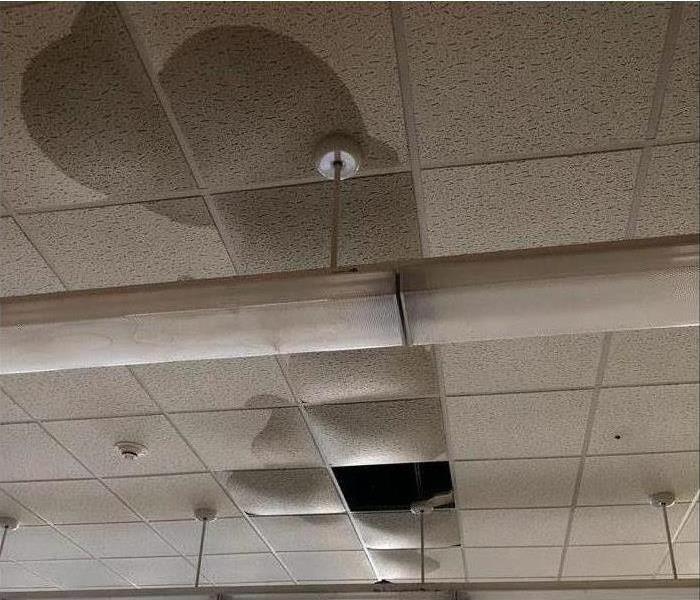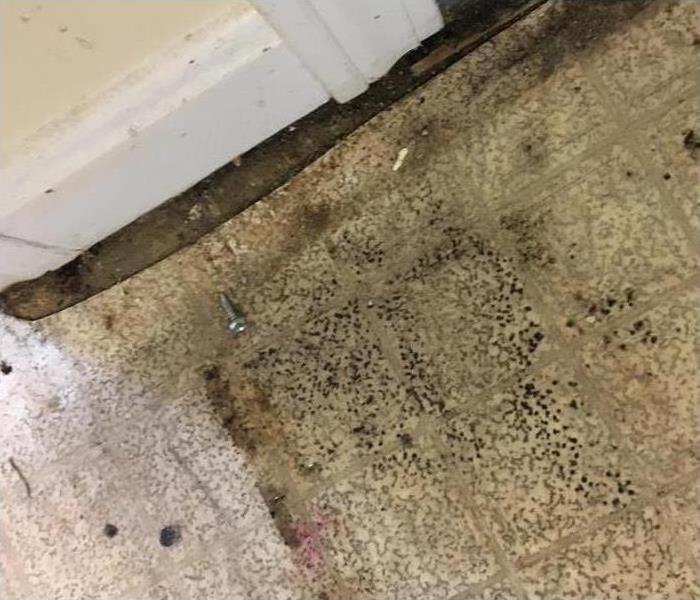How Do I Know If My Fire Sprinklers Are Ready?
10/7/2022 (Permalink)
What Are the Signs That My Fire Sprinklers Are Prepared?
Fire protection can be a critical part of your business and knowing how to keep your fire sprinkler system in top condition is important. Here are some tips for maintaining your sprinklers so that you can ensure that they're ready when you need them most.
About The Sprinkler System
Fire sprinklers are installed in buildings of all types and sizes. A fire sprinkler system is a network of pipes, valves and sprinkler heads connected to an alarm system that automatically detects the presence of smoke in a building. The detection initiates an automatic discharge from one or more pre-determined sprinklers, which releases water over a wide area to suppress the spread of fire while alerting occupants of the building.
Sprinkler maintenance is critical for ensuring that your automatic system operates properly and efficiently. A semi-annual inspection by a licensed professional can help you identify any issues before they become serious problems that could put people at risk.
Cleaning Your Sprinklers
How do you know when to clean your sprinklers?
You should clean them whenever they are dirty. This will ensure that they will be in good working order and able to put out water as soon as a fire starts. If you have an annual inspection from the fire department, the inspector may tell you when it is time for your sprinklers to be cleaned. You can also talk with an expert about this or look at maintenance schedules online if none of these options work for you.
What materials should I use to clean my sprinkler heads?
You will want a non-acidic cleaner that does not contain ammonia, bleach, or sodium hydroxide (also known as lye). These chemicals can damage the metal parts inside of your sprinklers. What do I do once I have my supplies ready?
When cleaning your sprinklers, make sure that all electrical power has been shut off before beginning any work on them! Next: lay down protective sheets like cardboard underneath each head so that no moisture can seep into anything else (and potentially start another fire!) Afterward: use small brushes or toothbrushes where needed; spray cleaners onto brush heads then scrub gently away dirt/grease buildup within assembly holes/pipe openings/etc.; rinse thoroughly after each part has been cleaned thoroughly enough so all traces of dirt are gone from inside components; finally dry everything well with paper towels then replace plastic covers back onto heads again after drying – you don't want mold growth happening inside there too!
Water Shut Off Valve
If your building has a water shut off valve, this is an excellent way to know if your fire sprinklers are ready.
- Find the valve in the building. It should be near an exit door or a stairwell, and it will look like a small faucet that's not connected to anything else. You may need to ask someone for help locating it.
- Shut off the water to your building by turning on the valve so that no water flows out of it at all.
The Maintenance Schedule for Your Sprinkler System
It is important to know the maintenance schedule for your sprinkler system. If you do not know the maintenance schedule, ask your fire protection professional.
If you are unsure of the maintenance schedule, contact a fire protection professional who can provide you with information specific to your system and location.
Keep an eye on your fire protection and emergency systems to help you keep your business up and running smoothly.
It is important to know when your sprinkler system needs maintenance, especially if you are not familiar with it. If a professional isn't readily available, check for leaks in the piping, damaged or blocked heads and/or nozzles, as well as signs of rust or corrosion.
Fire sprinklers are a great way to protect your business, but they’re not always easy to maintain. That’s why we recommend hiring a professional fire protection company like us at Master Protection Services for all your fire protection needs. We can make sure your system is working properly and ready to use in any emergency.
Ways To Keep Your Property Safe From Secondary Damage
8/30/2022 (Permalink)
 Water has ruined the ceiling tiles in this commercial building.
Water has ruined the ceiling tiles in this commercial building.
Ways To Keep Your Property Safe From Secondary Damage
Every year in Providence, RI, hundreds of business claims are filed as a result of water damage. Sometimes accidents are unavoidable; the damage might be the result of a flood, a pipe break, or a broken water heater.
These claims can be extremely costly, sometimes totaling ten thousand dollars or more, which could cause insurance rates to go up. And depending on what type you have, your policy might not cover certain things like secondary damage from mold.
Luckily, you can take steps to prevent or drastically reduce the amount of damage your building could sustain and save yourself from having to file a business claim. Here are a few things you can do to help keep your property safe from harm:
1. Leak Sealing
Make sure to inspect your foundation and areas around the exterior. If you find a crack or gap, make it watertight with the appropriate sealant.
2. Pipe Insulation
Any pipes that are exposed or accessible should be completely covered by insulation. If a pipe becomes frozen, it's easy for it to expand and burst. You should be able to find insulating materials at your local hardware store.
3. Drainage
It's important that water is able to drain away from the structure. Any gutters or downspouts should be kept clear of leaves or any other potential blockage, and the drainage areas should be free of debris.
4. Asset Protection
You should make sure that any valuable assets, such as electrical equipment and appliances, are raised above the floor to keep them safe from flooding. Non-waterproof valuables, such as important papers, should be stored in a secure place.
5. Consultation
It may be a good idea to consult with a professional water mitigation company about damage prevention. They can do a thorough inspection to make sure you haven't missed anything, and then give you expert, customized advice.
Filing a business claim for water damage is a hassle no one wants to have to deal with. But by taking the precautions outlined above, you can prevent most damage before it can happen.
How To Prevent Mold Recurrence
5/26/2022 (Permalink)
 Mold growth after water damage in Elmwood, RI.
Mold growth after water damage in Elmwood, RI.
Mold Recurrence: How To Avoid It
Recurring mold growth in your Elmwood, RI, business is unwelcome and frustrating. Fortunately, knowing the causes for the recurrence will help you keep the problem at bay.
Necessary Conditions
Mold returns for the same reason that it occurs in the first place: The conditions are right. The following are three things that fungi need to thrive:
- Warmth
- Food source
- Water source
Most indoor locations are warm enough to support mold. Nutrient sources, including pulpy products, dust and dirt, are regularly found in most buildings as well. The presence of water, however, can generally be controlled.
Prevention Methods
Even if a professional restoration company performs the initial mold removal, it is still up to you, the business owner, to prevent future growth. As discussed above, the presence of water is generally the easiest condition to control. If the area with the recurring mold problem is prone to high humidity, install a dehumidifier to remove the moisture from the area. Address water damage as quickly as possible and dry up spills, leaks and all standing water immediately.
In addition to keeping the area as dry as possible, there are specialized products available that are resistant to mold growth. Common options include paints, primers and fabrics. There are also sprays that can be applied to certain surfaces that are thought to help repel mold.
Another option is minimizing the number of mold spores present in the area. These spores occur almost everywhere, so it can be helpful to trap them in a HEPA filter before they have a chance to colonize. You may even have a chance to address two factors with one product if you select a combination dehumidifier and purifier.
Ideally, mold that has been properly removed would not return. However, this is not always the case. Fortunately, there are a variety of tactics available to those who are struggling with recurring mold growth.






 24/7 Emergency Service
24/7 Emergency Service

